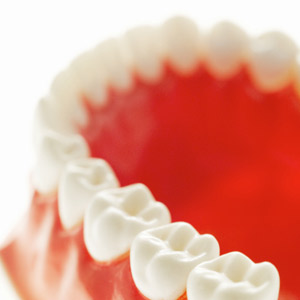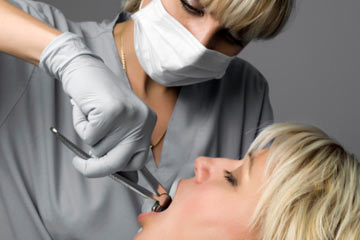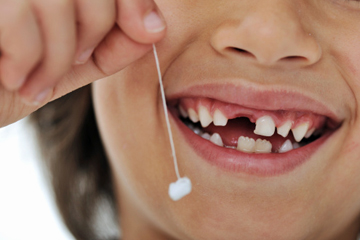
It often seems as if people who have fillings have them in their back teeth. Is that really true, or does it just appear that way? In this article, we’ll peek into the mouths of everyone from babies to seniors and try to figure out which teeth are most likely to decay and what the causes are. Then we’ll take a brief look at what you can do to keep your teeth well into old age.
The teeth most likely to decay and develop cavities change based on whose mouth we’re talking about. In infants and very young children, baby-bottle tooth decay reigns as the most likely cause of cavities. This type of decay develops most often in the upper, front teeth when babies doze off with bottles of milk, juice or other sugary drinks. Sugar remains on the teeth throughout the night, creating decay-causing bacteria. A similar problem can occur in toddlers when they are allowed to carry around a sippy cup full of sugar all day [source: Mayo Clinic].
In older children, teenagers and adults, the most likely teeth to decay or develop cavities are the permanent back teeth. These teeth, which come in beginning about age 6, are known as molars, premolars and wisdom teeth. Their job — chewing and grind food — dooms them [source: WebMD]
Open wide and we’ll take a look at why these particular pearly whites are the ones that cause the most trouble.
Contents
- Decay: It's the Pits — and the Fissures
- How to Keep the Teeth You Love
Decay: It's the Pits — and the Fissures
Take a look in the way back of your mouth or just feel along the tops of your back teeth with your tongue. Rather than being smooth or pointed on top like the teeth up front, these larger teeth have ridges and grooves known as pits and fissures.
While these pits and fissures are essential in chewing food — just try to imagine grinding up a bite of meat with those pointy front teeth — they also make back teeth the most prone of the permanent teeth to decay and cavities. Often toothbrush bristles can be too big to fit into pits and fissures, allowing bacteria to form, which produces the acid that causes tooth decay [source: Mayo Clinic]
So, what can you do to keep cavities from forming in the ridges and grooves of your back teeth? The answer starts with good health and dental care in children — and can begin as soon as the premolars, or six-year-old molars, come in.
Throughout our lives, from age 6 to 106, in the developed world, the most common factor that leads to cavities or decay is the bacteria that sticks around on teeth after eating sugary snacks or drinking sugary drinks and then is not removed completely [source: Mayo Clinic].
Among other tool, dental sealants help dentists keep food out of these troublesome spots Dentists apply these smooth plastic coatings easily and painlessly to the tops of back teeth to seal the fissured surface, blocking cavity-causing bacteria [source: Colgate].
Dental sealants are most often added to children’s teeth as soon as the premolars erupt completely through the gums. The other molars get sealant as they come in later in childhood [source: Colgate].
Less commonly, other teeth with grooves or pits in them may get sealant. They also can be applied on the deep grooves or fissures of teeth in adults if the teeth do not have fillings in them [source: Colgate].
So, what can you do to keep the teeth you know and love, including those cavity-prone molars, healthy? The next page looks at ways to combat tooth decay.
How to Keep the Teeth You Love
“
iStockphoto/Thinkstock
When you were a kid, did your dentist have goofy office signs telling you how to hold on to your teeth? Signs like a picture of an old man with a toothless grin, and a caption reading, "If you got ’em, floss ’em" or the phrase, "Brush and floss and you’ll be boss" might make you smile, but they also offer the best advice for how to keep the teeth you were born with.
Parents can ensure infants keep their baby teeth by not giving little ones a bottle to suck on as they go to sleep. The loss of baby teeth can cause problems for adult teeth in two ways [source: ADA]:
- A sugary snack at night can become a habit, which can continue into adulthood leading to decay in adult teeth.
- Baby teeth act as space holders for adult teeth. If decay leads to baby teeth being pulled, adult teeth can come in crooked or misaligned.
Once kids are older, teach them how to care for their teeth. These tips, when followed throughout life, can help ensure a mouthful of healthy teeth well into old age [source: Mayo Clinic]:
- Brush after every meal or at least twice a day with a fluoride toothpaste.
- Replace your toothbrush every couple of months or if the bristles are worn. or flat. A misshapen toothbrush can’t effectively clean your teeth [source: ADA].
- If you are at high risk of cavities, rinse with a fluoride mouthwash.
- Drink tap water, which, in the United States and many other countries, contains fluoride. Most bottled waters do not.
- Don’t snack or sip on sugary drinks all day. Doing this keeps the acidic bacteria in your mouth that leads to tooth decay.
- See your dentist regularly to learn what other treatments might be best for your mouth.
The next page contains links to a lot more information about ways to fight tooth decay. Here’s to a healthy and happy mouth!





